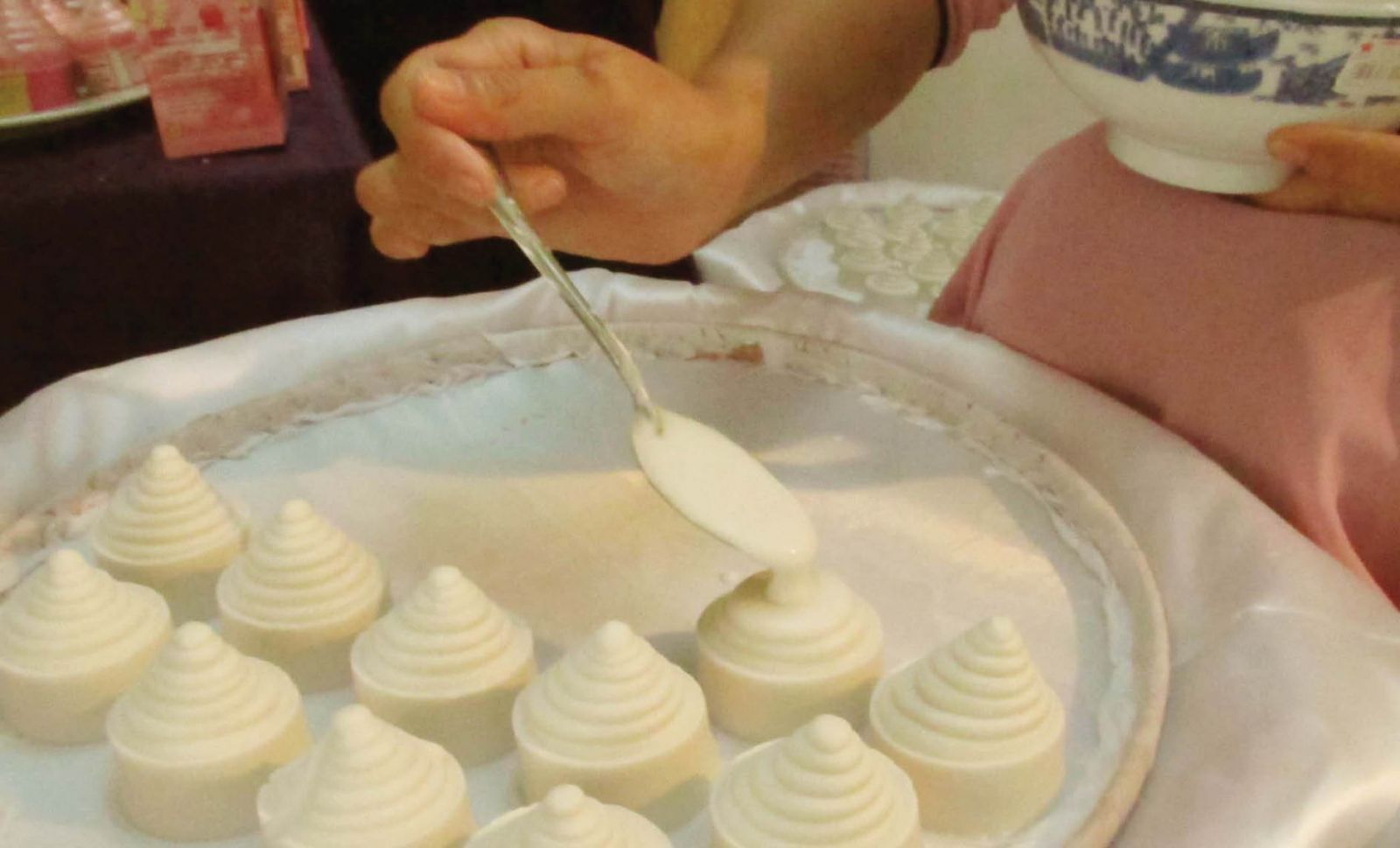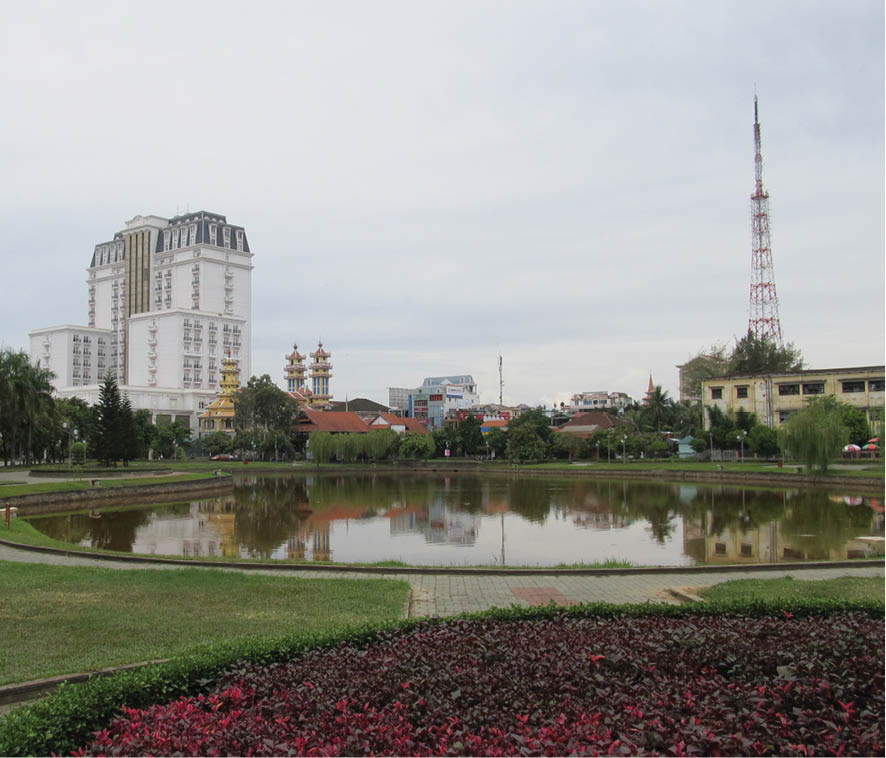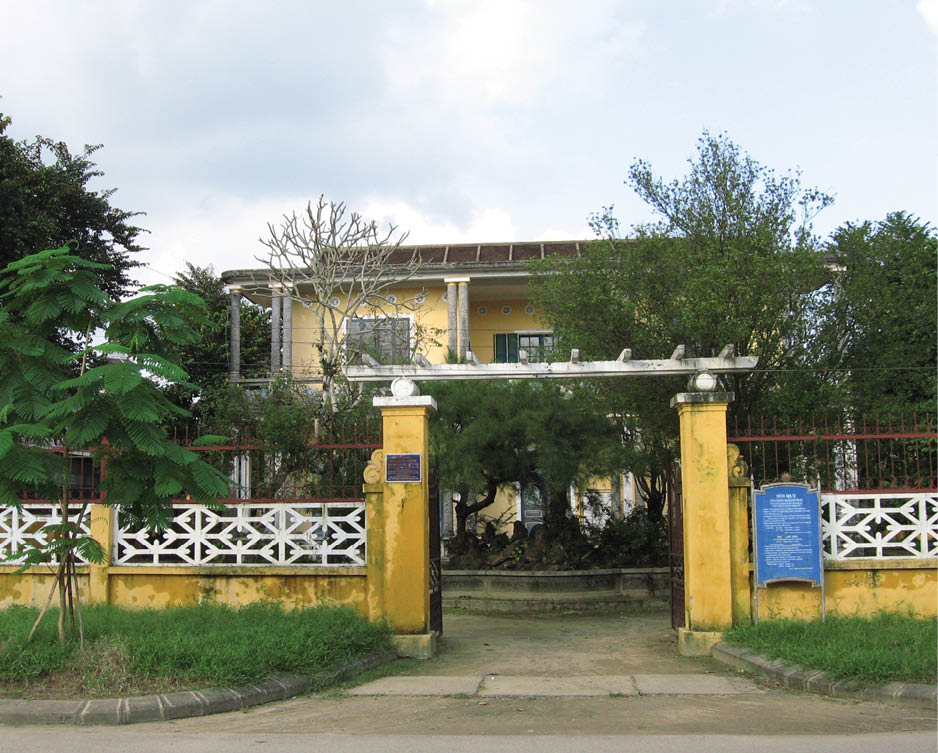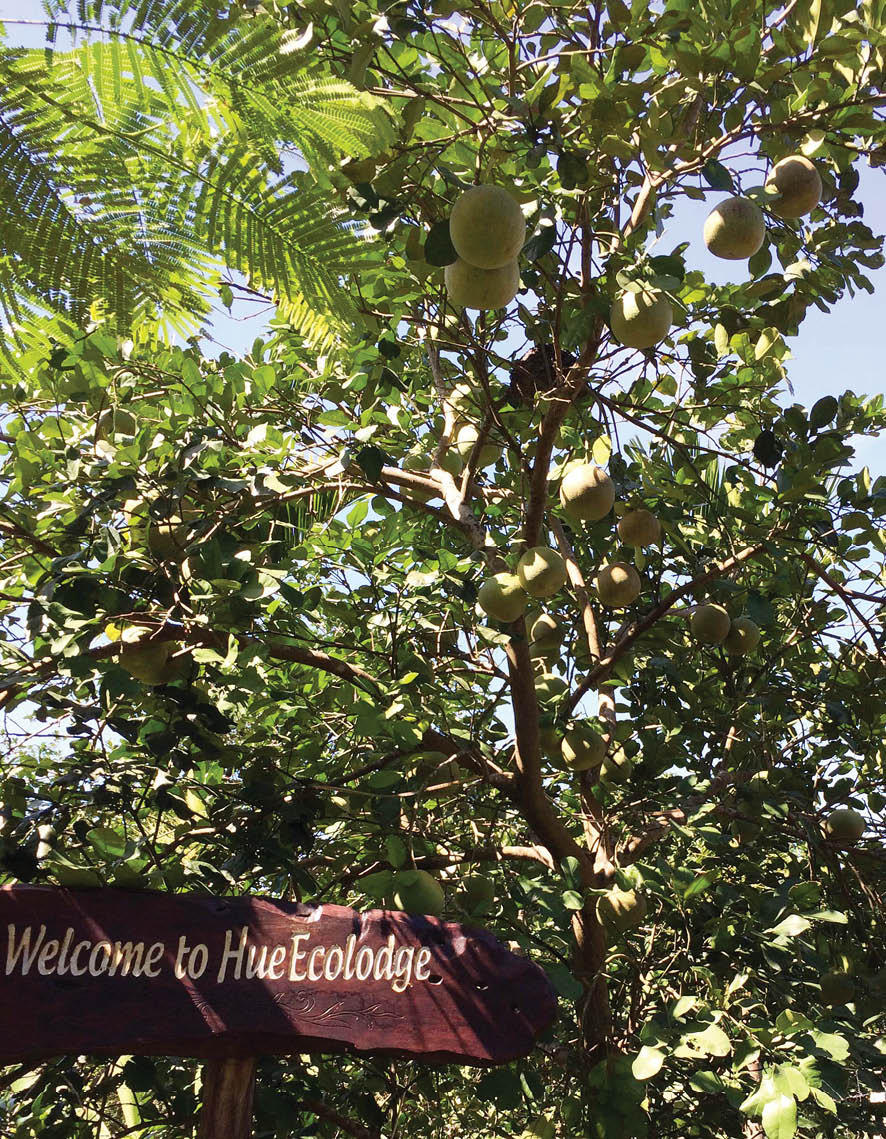
Hue women are also returning to Hue-styled phan nu (a kind of facial powder.)
Although Vietnam has for many years known as a country that exports rice, Vietnamese rice is sold at a lower price than Thai and Indian rice due to its low quality. Even on the domestic market, Vietnamese people are looking for imported rice. It is unacceptable. ST25 can thus be a milestone or an important turning point for us to get rid of that ironic situation.
In the joy named ST25, I suddenly remember another story about a very famous species of rice called gao De. “Tom ran lot vo bo duoi/gao De An Cuu ma nuoi me gia” (Shrimps are peeled; tails are removed/An Cuu De rice to feed elderly Mom.) De rice was described as white, sticky and fragrant and to present to the kings in the past. That is what we have heard about De rice. In reality, we common descendants have never had a chance to try.

This used to be the An Cuu field where well-known De rice was grown
Even few old men had a chance either because that species of rice was lost after the monarchy ended. Rumor has it that the only one who still kept De rice was Her Highness Tu Cung (i.e. Queen Mother Doan Huy). She cooked some on death anniversaries of the king (?).
No one can explain why such a precious species was lost. We just guess because it took a long time to grow and its productivity was low while the demand for rice at the time after the Nguyen dynasty ended (1945) was so immense. De rice was therefore not the priority and gradually lost.
Later, it was said that Dr. Phan Phuoc Hien from the Agriculture and Forestry University in Ho Chi Minh City went to the International Rice Research Institute (IRRI) in the Philippines to look for An Cuu De rice but up till now no result has been reported.

Queen Mother Tu Cung’s residence is where the last De rice was kept
As the main city of the Inner Realm for nearly 400 years, then the capital city of the Tay Son dynasty and the Nguyen dynasty, Phu Xuan-Hue must have owned innumerable strange plants presented to the kings from various regions. Mandarins also brought back some species in their duty journeys. Some queens who missed the specialities of their hometowns ordered some to be sent to the imperial city. Species might find their different ways to the capital city, but they all must be rare and special.
The end of monarchy in Vietnam more than 7 decades ago also means that Hue has no longer been the capital city of the country for the same duration. With time and historical incidents, many species and well-known specialities are fading and lost.
De rice is a depressing example. The same thing happens to a famous kind of tea named Tuoc Thiet which used to be grown in the mountainous area in An Cuu and well known for its fragrance and medicinal features.

Thanh tra grapefruit is not only a specialty in cuisine but also a main fruit tree grown in ecological tourist areas.
Luckily, some gardens in Hue still spare room for mangosteen, lychee, longan, etc. Many Hue people, after years of chasing exotic fruits, are now returning to garden fruits; and, ornamental flowers growers, to Hue-native Osmanthus fragrans, camellia, banana shrub, amplexicaul tea, etc.
Thanh tra grapefruit is another interesting story. No other kinds of grapefruit can be compared with thanh tra. In the past, thanh tra was presented to the king; and now it is bringing good income for many families.
The difficult time when people had to find enough food to eat was over. Now is the time to enjoy good food. The remained species used to be presented to kings can meet that criteria. What we have to do now is avoid the loss of species like De rice or Tuoc Thiet tea so that we can protect and spread them.
It is not only of economic value but, more importantly, to conserve the cultural value for Hue, a necessary step in the process toward a heritage city.
Story and photos: Hien An